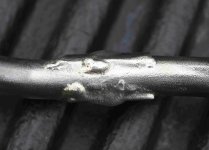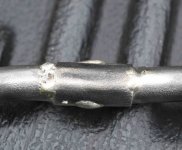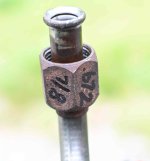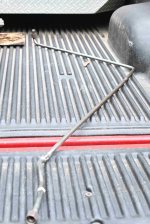I wouldn't worry about your copper patch too much because you could always paint it. But steel would be better. In any case your patch looks crappy. I mean the soldering job. If I were you I would remove the patch and start over. You can get small pieces of steel sheet at a good hardware store. Where I live I have two options. The first is available at two hardware stores. They both sell all thread, steel rod, steel tubing, and steel sheet. Other metals and shapes as well. The steel sheet is available in one square foot and four square foot pieces. My second option is available at only one store. The store sells "Hobby Metals". The Hobby Metals are small pieces of steel, brass, and aluminum. These pieces come in various shapes and one of these shapes is sheet. Small pieces of sheet, like 4 x 4 inch. A good hobby shop will also carry the steel sheet you need. So take the tube off of the tractor, remove the patch, clean the area, and put on a new patch. And remember, getting this job done right will give you the experience and confidence to do this type of job again. You may need to do this in the future because you won't have another option and you will know how.
Eric



